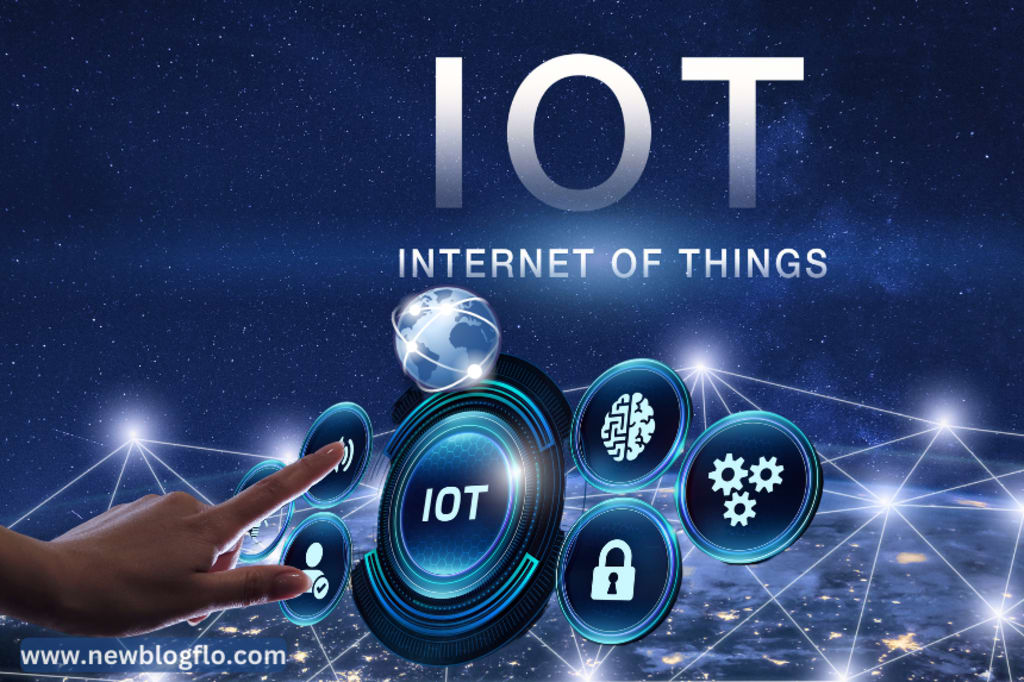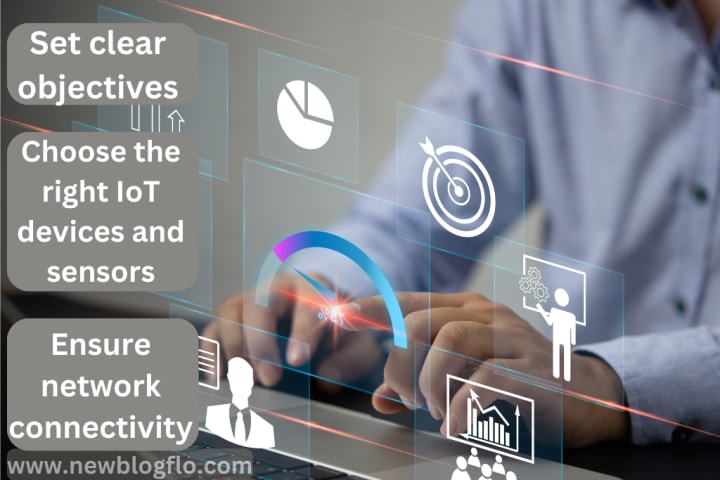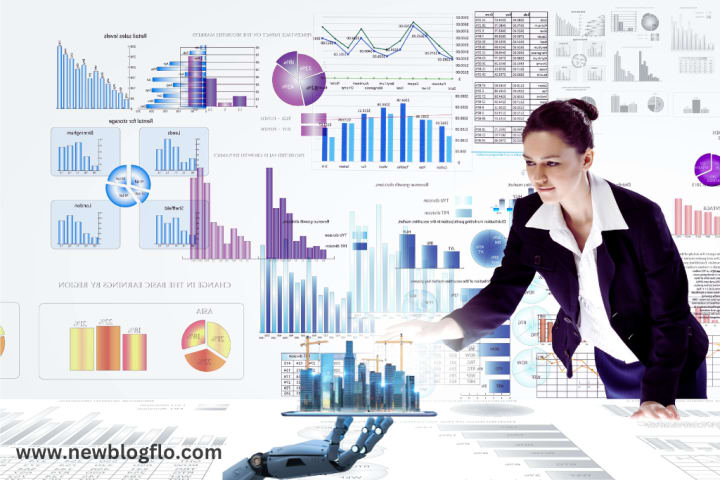Revolutionize Your Business with IoT Data Analytics
Unleashing the Power of IoT with Advanced Data Analytics

Unlock the full potential of your business with our advanced IoT data analytics solutions. We provide comprehensive insights to drive innovation, optimize operations, and create new revenue streams. Today, you may experience the power of data-driven decision making.
Unleashing the Power of IoT Data Analytics
IoT data analytics refers to the process of collecting, analyzing, and interpreting the vast amount of data generated by interconnected devices. These devices, equipped with sensors and actuators, can capture real-time information about various aspects of your business operations.
By leveraging IoT data analytics, you can unlock a wealth of opportunities to optimize processes, enhance customer experiences, and create new revenue streams.
Understanding IoT Data Analytics
So, what's this buzzword all about? IoT Data Analytics is the science of examining raw data from your Internet of Things (IoT) devices to draw conclusions about your business. It's like having a super-smart assistant who can sift through mountains of data and find the golden nuggets that can help your business grow.
Why Your Business Needs IoT Data Analytics
Think about it. Your IoT devices are constantly collecting data. But without analytics, that data is just a bunch of numbers. With IoT Data Analytics, you can turn those numbers into actionable insights.
- Improve Efficiency: IoT Data Analytics can help you identify bottlenecks in your operations and find ways to streamline your processes.
- Boost Customer Satisfaction: By analyzing customer behavior data, you can tailor your products and services to meet their needs.
- Increase Profitability: With better insights into your business, you can make smarter decisions that boost your bottom line.
How to Implement IoT Data Analytics in Your Business

To implement IoT data analytics in your business, follow these steps:
1. Set clear objectives: Begin by defining your goals and the purpose of implementing IoT data analytics in your business. Determine which areas of your operations can benefit the most from IoT solutions and understand how data analytics can help improve efficiency, reduce costs, and drive growth.
2. Choose the right IoT devices and sensors: Identify the IoT devices and sensors that can provide the data needed to achieve your objectives. This can include a wide variety of devices, such as temperature sensors, humidity sensors, cameras, and GPS trackers.
3. Ensure network connectivity: Establish a robust communication infrastructure to enable seamless data transmission from IoT devices to your central analytics system. This can involve using Wi-Fi, cellular networks, or other wireless communication protocols. Consider the scalability of your network as your IoT ecosystem grows.
4. Data aggregation and storage: Collect and store the data generated by your IoT devices in a central repository. This may require utilizing cloud-based platforms or on-premises data storage solutions.
5. Implement data analytics tools: Take advantage of advanced analytics tools and software solutions designed to process IoT data. These tools should be capable of handling large amounts of data and provide real-time insights to inform decision-making.
6. Develop an IoT analytics strategy: Define the key performance indicators (KPIs) you will be tracking and outline a plan for which types of analyses will be performed to meet your objectives. This strategy should also include a plan for data integration and how insights will be shared across your organization.
7. Ensure data security and compliance: Implement robust security measures to protect your IoT data from cyber threats and ensure that your IoT implementation complies with relevant data protection regulations. This may include encrypting data, continuous monitoring, and developing a comprehensive cyber risk management plan.
8. Train staff and encourage adoption: Educate your employees on the benefits of IoT data analytics and train them on using the tools and insights effectively. Foster a culture of data-driven decision-making and encourage your team to embrace the technology.
9. Monitor and optimize your IoT data analytics process: Regularly review the performance of your IoT data analytics implementation, and make necessary adjustments to improve its efficiency and effectiveness. This may involve refining your analytics strategy, streamlining data collection processes, and updating security protocols.
By following these steps, you can successfully implement IoT data analytics in your business, enabling smarter decision-making, improved operational efficiency, and increased competitiveness.
Driving Business Efficiency with Predictive Maintenance
One of the key benefits of IoT data analytics is the ability to implement predictive maintenance strategies. By continuously monitoring the performance of your assets and analyzing the data collected, you can proactively identify potential issues and address them before they escalate into costly failures.
This approach helps to minimize downtime, reduce maintenance costs, and improve overall operational efficiency.
Enhancing Product Quality through Real-Time Monitoring
With IoT data analytics, you can monitor the quality of your products in real-time, ensuring that they meet the highest standards. By capturing and analyzing data from sensors embedded in your manufacturing processes, you can identify deviations, detect anomalies, and take immediate corrective actions.
This proactive approach to quality control leads to improved product consistency, customer satisfaction, and brand reputation.
The Magic of IoT Data Analytics
Let us delve deeper into the intricacies of IoT Data Analytics. The process involves not only gathering data, but also interpreting it meaningfully. Discerning valuable insights can be akin to locating a needle in a haystack, but once discovered, these insights hold significant value.
- Predictive Analysis: This is where your business can become a fortune teller. Predictive analysis allows you to forecast future trends based on your current data. Imagine knowing what your customers want before they even know it themselves!
- Real-time Analysis: This is all about the here and now. Real-time analysis lets you monitor your operations in, well, real time. Spot issues before they become problems and keep your business running smoothly.
- Prescriptive Analysis: This is your business's personal advisor. Prescriptive analysis uses your data to suggest the best course of action. It's like having a business guru at your fingertips.
IoT Data Analytics Success Stories
Still not convinced about the power of IoT Data Analytics? Let's look at some businesses that have used it to their advantage.
- Smart Farming with John Deere: John Deere, a leading manufacturer of agricultural machinery, has been using IoT data analytics to revolutionize farming. They have equipped their machines with sensors that collect data on soil conditions, crop health, and weather patterns. This data is then analyzed and used to provide farmers with insights that help them optimize their farming practices, leading to increased crop yields and reduced costs.
- Predictive Maintenance with Rolls-Royce: Rolls-Royce, a leading manufacturer of aircraft engines, uses IoT data analytics for predictive maintenance. Sensors embedded in their engines collect data on various parameters like temperature, pressure, and vibration. This data is analyzed to predict potential failures before they occur, allowing for timely maintenance and reducing downtime.
- Smart Cities with Barcelona: The city of Barcelona has been using IoT data analytics to improve its services and infrastructure. For example, they have installed sensors in parking spots to monitor availability in real-time, helping drivers find parking more easily. They have also used sensors to monitor waste levels in bins, allowing for more efficient waste collection.
- Energy Efficiency with Schneider Electric: Schneider Electric, a global specialist in energy management, uses IoT data analytics to improve energy efficiency in buildings. Their system collects data on energy usage from various devices and systems within a building. This data is then analyzed to identify inefficiencies and provide recommendations for energy savings.
- Healthcare with Medtronic: Medtronic, a global leader in medical technology, uses IoT data analytics to improve patient care. They have developed devices that continuously monitor patients' health parameters and send this data to healthcare providers. This allows for real-time monitoring of patients and early detection of potential health issues.
- Supply Chain Management with Maersk: Maersk, a global leader in shipping and logistics, uses IoT data analytics to optimize its supply chain. They have installed sensors on their containers to track their location and condition in real-time. This data is analyzed to optimize routes, reduce delays, and ensure the safety and quality of the goods being transported.
- Smart Homes with Nest: Nest, a company owned by Google, uses IoT data analytics to improve home automation and energy efficiency. Their smart thermostats collect data on the homeowners' habits and preferences, and use this data to automatically adjust the temperature, leading to energy savings and improved comfort.
- Manufacturing with GE: General Electric (GE) uses IoT data analytics in its manufacturing processes. They have equipped their machines with sensors that collect data on various parameters like temperature, pressure, and vibration. This data is analyzed to optimize the manufacturing process, reduce waste, and improve product quality.
- Transportation with Uber: Uber uses IoT data analytics to optimize its ride-hailing service. They collect data on traffic conditions, driver availability, and customer demand. This data is analyzed to optimize routes, reduce wait times, and improve the overall efficiency of their service.
- Retail with Amazon: Amazon uses IoT data analytics to optimize its operations and improve customer experience. They collect data on customer behavior, preferences, and purchasing habits. This data is analyzed to personalize recommendations, optimize inventory, and improve customer service.
IoT data analytics success depends on data quality, analytics tools, and insights. These examples demonstrate transformative potential across industries, enabling businesses to optimize operations, improve products and services, and enhance customer experience by collecting and analyzing connected devices.
These examples illustrate the transformative potential of IoT data analytics across various industries.
Your IoT Data Analytics Journey Starts Now

So, are you ready to revolutionize your business with IoT Data Analytics? It's not simply a fad; it's the business of the future. And the Sooner you start, the sooner you'll witness the benefits.
Remember, data is just numbers until you make sense of it. And with IoT Data Analytics, you can turn those numbers into a roadmap for success. So, what are you waiting for? Start your IoT Data Analytics journey today!
Optimizing Supply Chain Management with Data-Driven Insights
IoT data analytics offers unprecedented visibility into your supply chain operations. By integrating data from IoT devices throughout the supply chain, you can gain valuable insights into inventory levels, demand patterns, and logistics efficiencies.
The insights gained from IoT Data Analytics empower organizations to make well-informed, data-driven decisions that lead to streamlined processes, reduced waste, and an optimized supply chain. This ultimately results in enhanced efficiency and cost savings.
Several use cases demonstrate the value of IoT data analytics, such as predictive maintenance, which can lower maintenance costs by 40% and reduce equipment downtime by 50% (McKinsey). Additionally, IoT analytics can improve customer experience, increase visibility and control, and promote growth in new markets, contributing further to the overall benefits of data-driven insights.
Unlocking New Revenue Streams with Innovative Offerings
By harnessing the power of IoT data analytics, you can uncover new business opportunities and revenue streams. The insights derived from analyzing IoT data can help you identify customer needs, preferences, and emerging market trends.
The crucial insights gained from this information enable the creation of pioneering products, services, and business models, specifically designed to address the ever-changing needs of customers and maintain a competitive edge in the industry.
By understanding and adapting to the current market landscape, organizations can strategically align their innovation efforts with customer preferences and drive growth in the evolving business environment.
Building a Scalable IoT Data Analytics Architecture
To fully leverage the potential of IoT data analytics, it is essential to have a robust and scalable architecture in place. The architecture should be capable of handling high data velocity and volume, integrating diverse data types, ensuring data security, and supporting complex processing tasks.
Platforms like Databricks provide a comprehensive solution, offering a technical architecture that seamlessly integrates multiple components for data ingestion, processing, modeling, and insights delivery.
Embracing the Future of Industrial Data Analytics
The significance of analyzing data from IoT devices is becoming more apparent as various industries like aerospace, automotive, energy, healthcare, manufacturing, and retail are increasingly adopting these technologies.
Organizations that invest in IoT data analytics can achieve cost optimization, productivity improvement, and revenue increase. By leveraging real-time sensor data, AI-driven analytics, and machine learning algorithms, businesses can gain a competitive edge and unlock new possibilities for growth.
Conclusion
IoT Data Analytics is a powerful tool that leverages constant connectivity and data analytics to revolutionize various domains, offering opportunities for innovation and operational efficiency. With a projected global economic impact of $12.5 trillion by 2030, IoT Data Analytics is expected to contribute significantly to the transformation of industries.
Effective IoT platforms that prioritize application development, data management, security, and analytics are crucial for successful implementation. However, challenges such as change management, interoperability, cybersecurity, and privacy considerations should be addressed to accelerate adoption and fully realize the benefits of IoT Data Analytics.
By embracing scalability, organizations can unlock the true potential of IoT Data Analytics and drive transformative outcomes in their operations and decision-making processes.
About the Creator
Naglaa Saleh
Our secrets time is a blog that covers diverse topics with a focus on providing objective and exclusive content.
Enjoyed the story? Support the Creator.
Subscribe for free to receive all their stories in your feed. You could also pledge your support or give them a one-off tip, letting them know you appreciate their work.






Comments
There are no comments for this story
Be the first to respond and start the conversation.